
5 things to know about Winnipeg’s big sewage problem
115 billion litres, 70 years to fix, $5.5 billion in lawsuits
Five continents. Sixty-five countries. Over five hundred cities. Hundreds of thousands, maybe millions, of protesters. The activist wing of the climate movement came out of its long pandemic slumber over the weekend, reigniting protests in the first global climate strike since Greta Thunberg sailed to New York in 2019.
The March To End Fossil Fuels has a straightforward demand for world leaders attending the United Nations’ Climate Ambition Summit in New York this week: “All we’re asking for is a plan,” said Tzeporah Berman, executive director of the Fossil Fuel Non-Proliferation Treaty, a key coalition member of this weekend’s strike. “A plan to manage the decline of fossil fuel production.”
Other protesters had harsher words or more specific demands relating to whichever pipeline happened to bisect their territory, but all shared the same fundamental ask: quit prevaricating. Start executing the phase-down of fossil fuel production, and take care of workers while you do it.
In Vancouver, where I live, roughly 5,000 people turned out. We staged at city hall, then marched across Cambie Bridge to the Vancouver Art Gallery, under a fittingly scorching sun. I brought my seven-year-old daughter; she experienced the event as a carnival of strange delights, waving her hand-drawn placard (planet, cosmos, witches), impressed by the spectacle and indifferent to the calculus of political impact that drove so many adults to chant incomprehensible couplets, play instruments she’d never seen or heard before and don costumes six weeks before Halloween.
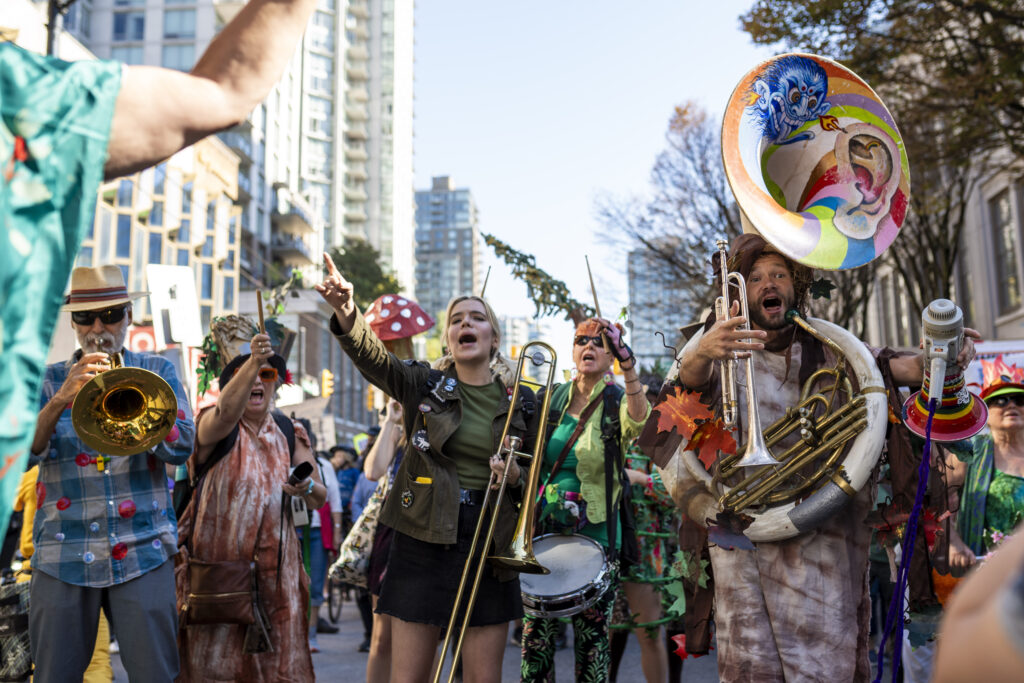
Unlike climate policy, a successful street march relies heavily on vibe, and this one was full of it.
And yet, throughout that Friday afternoon, I couldn’t help wondering: what should we make of the numbers?
For as vibrant as it was, Vancouver’s turnout in 2023 was a mere shadow of 2019’s, when 100,000 people swarmed the exact same route. That, too, was a Friday afternoon, so you couldn’t blame the work day. A similar diminution marked the whole global movement: three times more countries hosted rallies in 2019 than this year. In New York, then as now, the strike’s epicentre, organizers estimated 250,000 people came out to see Greta Thunberg in 2019; four years later, the number dropped to 75,000.
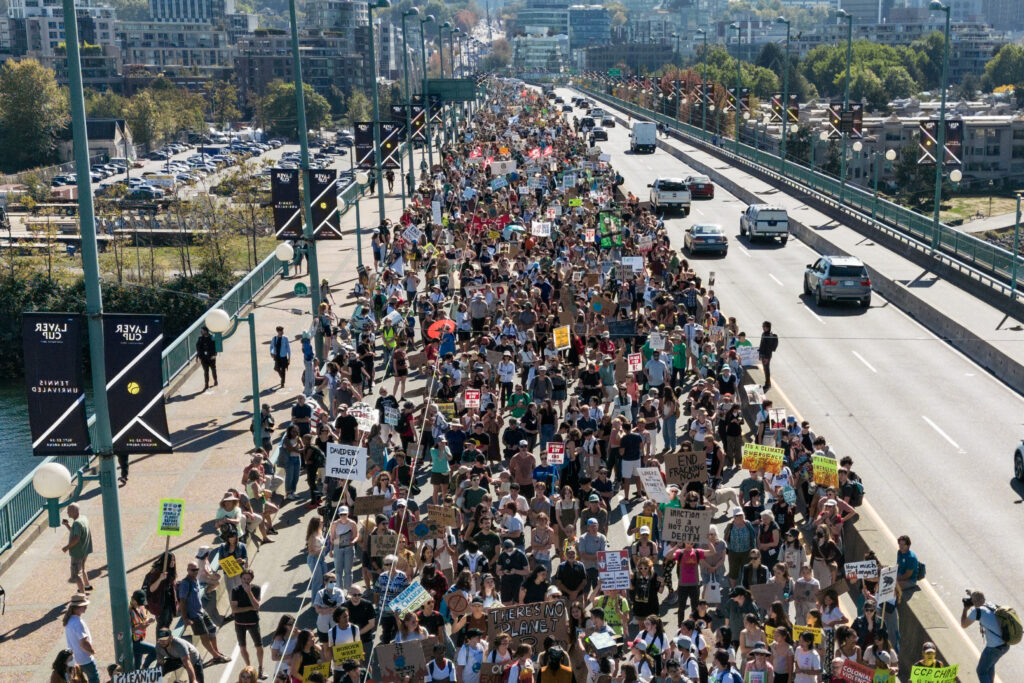
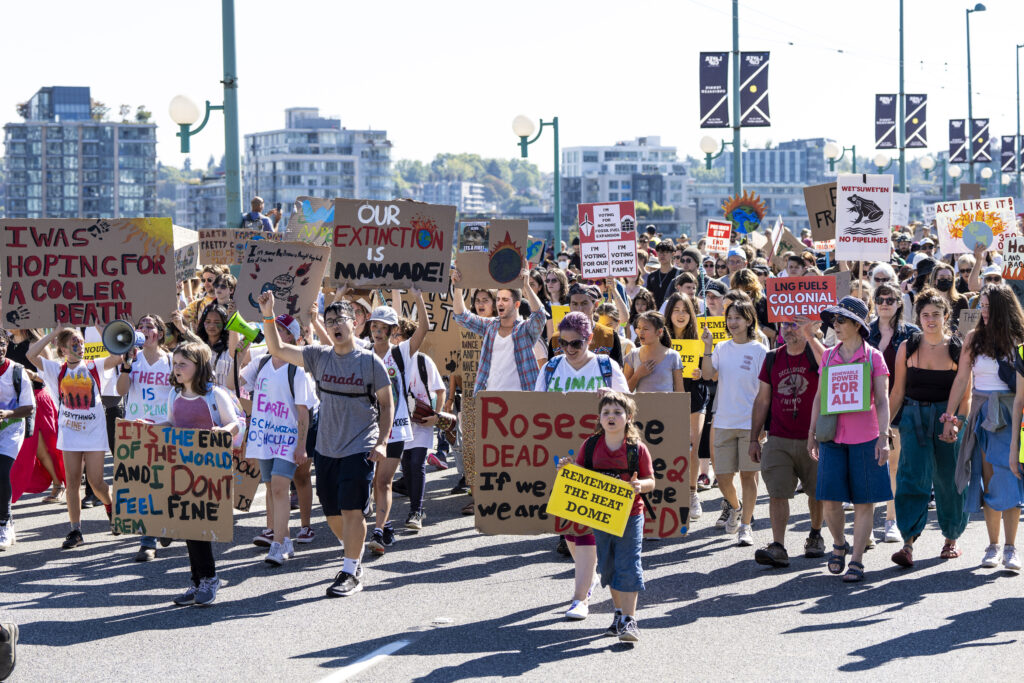
Fossil fuel production, meanwhile, has gone in the opposite direction. Canada has doubled its output of oil and gas since 2010, and today is second only to the U.S. for planned expansion of oil and gas production. Although production falls under provincial jurisdiction, Ottawa does have the power to impose an emissions cap, something Prime Minister Justin Trudeau has been promising for almost two years. A central demand of protests across Canada was for Trudeau to finally deliver on that promise.
As Caroline Brouillette, executive director of the Canadian chapter of the Climate Action Network, told me: “We need more than just vibes from the prime minister on this policy.”
There’s a powerful temptation, when describing a movement you admire, to wrap it in positive spin. To emphasize the good, zoom in on small victories, elide big disappointments. That tendency was apparent in most of the speeches I heard on Friday. Much as I sympathized — you’re trying to inspire the masses, not depress them — I also felt my hackles rise. That style of narration embodies the slick slope from reporting to propaganda; once you slide down, it’s all but impossible to climb back up.
And so for me, the weekend was both joyous and laden with self-reckoning: could I describe what I saw honestly without sounding defeated? Would that not be a disservice to the countless hours of unpaid labour the organizers had put in, for a cause I too hold dear? Mightn’t their literal labour of love validate a narrative that’s hopeful and honest?
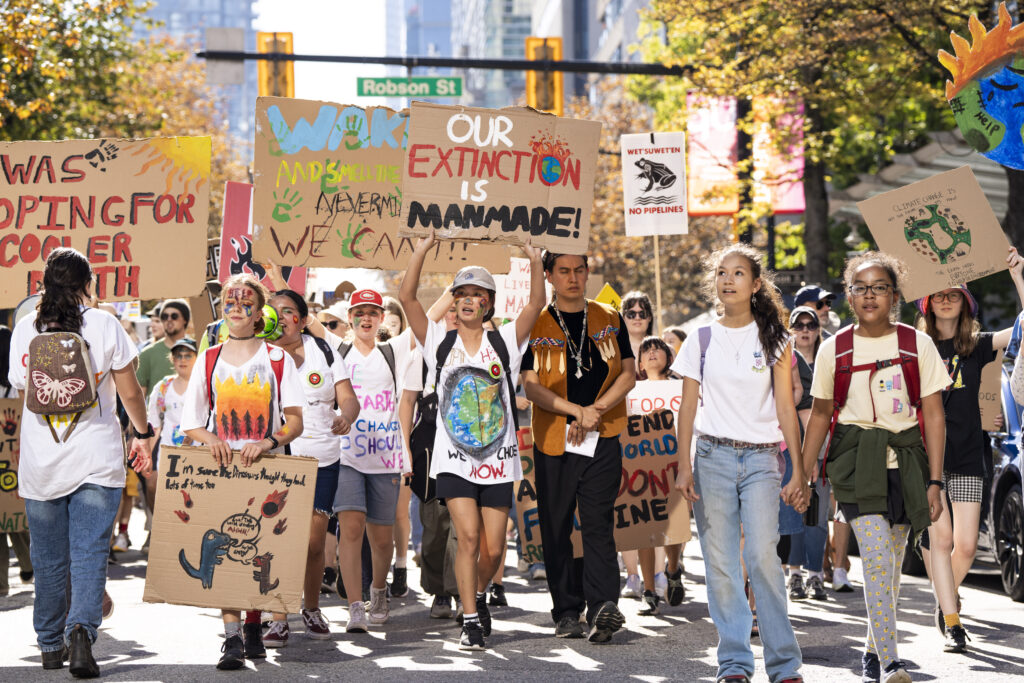
“Pretty much every spare minute of my daily life has been consumed by this,” an organizer with the grassroots climate group For Our Kids told me a few days before the Vancouver rally. He asked me not to use his name, for fear his employer would frown on how much this march had cut into his work life. His children were a prime motivation. “When they grow up, if they ever ask me, ‘how did this happen,’ I want to be able to at least look my son in the eyes and tell him that I tried.”
Like others I spoke to, this organizer never expected to draw the same numbers as 2019 had pulled; the pandemic had taken too much of a toll on the movement, here and everywhere. The success of Vancouver’s 2019 strike was thanks to the inspired efforts of a youth group called the Sustainabiliteens; but like Greta Thunberg, those teens had all since graduated, leaving an organizational vacuum in their wake.
For Our Kids and a handful of other coalition partners had to fill that void from scratch, with less than three months’ notice (the global strike wasn’t announced until early July). “It just kind of fell in our lap,” the organizer said. “What we’re trying to do in organizing this strike is bring back some of that energy that in 2019 was a real tipping point.”
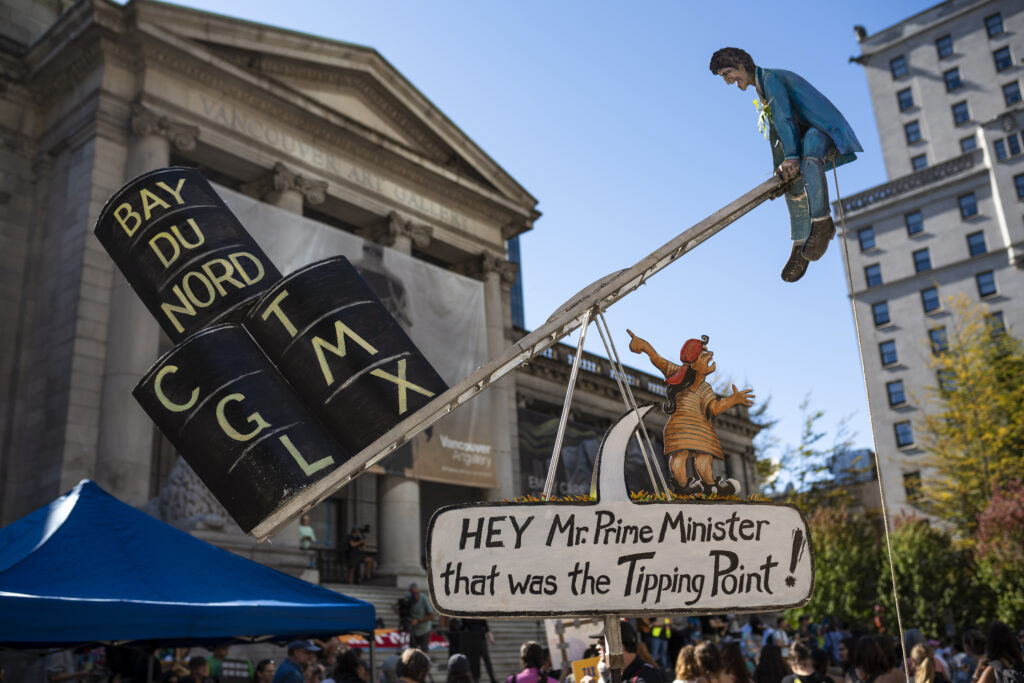
“Organizing and movements are all about momentum,” Brouillette said. In 2019, the movement had a breathtaking amount of it: Extinction Rebellion had just stormed the streets of London with such theatrical panache that the U.K. declared a climate emergency weeks later, inspiring chapters to form in dozens of countries. At the same time Greta Thunberg was cresting to fame, bringing Fridays For Future to cities all over the world and lending her star power to the blockbuster climate-strike weekend of 2019. Six months later came the global lockdown.
“So this is only the start, the restart and the reignition of this energy,” Brouillette said.
It’s too early to know if reality will live up to that sentiment. But activism isn’t the only branch of the climate movement; another is the clean-energy business, which had a far more successful pandemic than grassroots organizers did. The explosion of renewables is no longer a matter of wishful thinking, but rather a concrete phenomenon — one that’s much easier to quantify than the policy impacts of activism.
Even those impacts, ephemeral as they are, may be coming into view. It could be mere coincidence that California chose the first day of the climate strikes as the day to announce the state’s historic lawsuit against five of the biggest oil companies on Earth, suing Exxon, BP, Shell, ConocoPhillips and Chevron, for their decades of climate disinformation. It isn’t the first lawsuit of its kind, but it is by far the biggest, with the leader of the world’s fifth largest economy — itself founded on the proceeds of oil — personally endorsing the suit. “The climate crisis is after all a fossil fuel crisis, period,” Governor Gavin Newsom said right around the time my daughter and I were marching across the Cambie Bridge. “The scale and scope of what California can do, we think, can move the needle.”
Now that’s a speech worth cheering for. Let’s hope our own prime minister is listening, and preparing some needle-moving measures of his own. Until then, is there any choice but to keep pushing?
Get the inside scoop on The Narwhal’s environment and climate reporting by signing up for our free newsletter. On a warm September evening nearly 15...
Continue reading
115 billion litres, 70 years to fix, $5.5 billion in lawsuits

Climate change, geopolitics and business opportunities power a blue economy

10 billion litres of sewage are dumped into Winnipeg’s lakes and rivers each year. Some...
